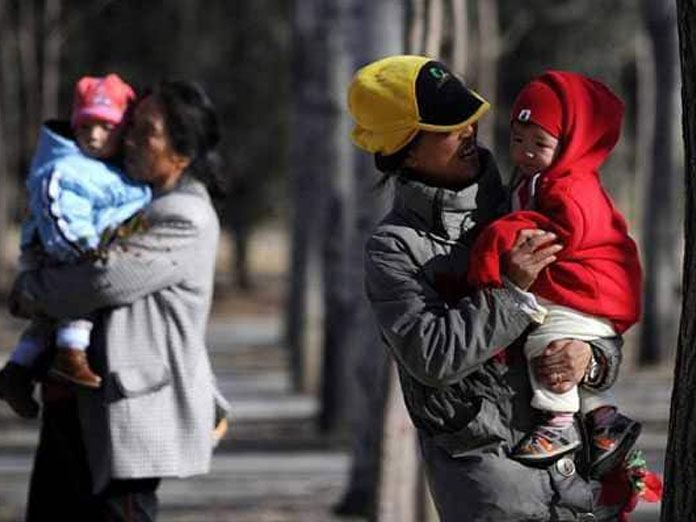BEIJING: China’s two-child policy implemented in 2016 has failed to make an impact on the country’s low birth rate as the number of new-borns dropped by two million last year in the world’s most populous nation, according to official figures released Monday.
The figures released by the National Bureau of Statistics (NBS) said the low birth rates coupled with the slowdown of the Chinese economy raised concerns as the country faced demographic crisis with the population of above 60 years making 249 million, accounting for almost 18 per cent of the total population.
After China implemented the comprehensive two-child policy that allows all couples to have two children – abandoning its decades-long one-child policy – in 2016, the country’s health authority predicted that the fertility rate in 2017 and 2018 would be 1.97 and 2.09.
They predicted that the number of new-borns in 2018 would be 7.90 lakh more than 2017.
The steady increase in old age population raised concerns over mounting costs of health care for the elderly and the shortage of labour in the world’s second largest economy which is also facing a slowdown.
A total of 15.23 million babies were born last year in China, a drop by about two million from that of 2017, the data said.
It marks the second-year consecutive decrease since the country relaxed its controversial family planning policy and fully implemented the universal second-child policy since 2016.
The birth rate also dropped from 1,243 to 1,094 per 100,000 population from 2017 to 2018, state-run China Daily reported, quoting the NBS data.
Before the population data was released, Chinese experts forecast that the number of birth for last year would continue to fall due to causes such as rapid decline in the number of women at childbearing age and people’s lack of willingness to have more babies.
China adopted the universal second-child policy at the beginning of 2016, allowing all couples to have two children, to counter problems such as ageing and dwindling workforce.
After the number of birth reached 17.86 million that year, the highest since 2000, the number of birth fell to 17.23 million in 2017.
The latest NBS figures also show that the total population on the Chinese mainland reached 1.395 billion, an increase of 5.3 million year-on-year with the number of people at 60 years old or above exceeded 249 million, accounting for 17.9 per cent of the total population, according to the bureau
The number of workforce, or those between 16 and 59 years old, stood at around 897 million, accounting for 64.3 per cent of the total population, it said.
Yi Fuxian, a research fellow at the University of Wisconsin-Madison, and Su Jian, director of the National Centre for Economic Research at Peking University, told the state-run Global Times early this month that the figures for the number of new-borns failed to meet the health authority’s expectation.
The number of women between the ages of 20 and 39 is expected to drop by more than 39 million over the next decade, said He Yafu, a demographer and author of a book on the impact of China’s population policy.
“Without the introduction of measures to encourage fertility, China’s population will fall drastically in the future,” He said.
Chai Zhenwu, president of the China Population Association, told media in October last year that the number of people born will continue to fall over the next few years.
“The year of 2018 was the turning point for China’s population structure, which witnessed a negative growth for the first time,” Yi predicted.
Recent reports said China was planning to completely abandon the birth control policy to encourage people to have more children. PTI







